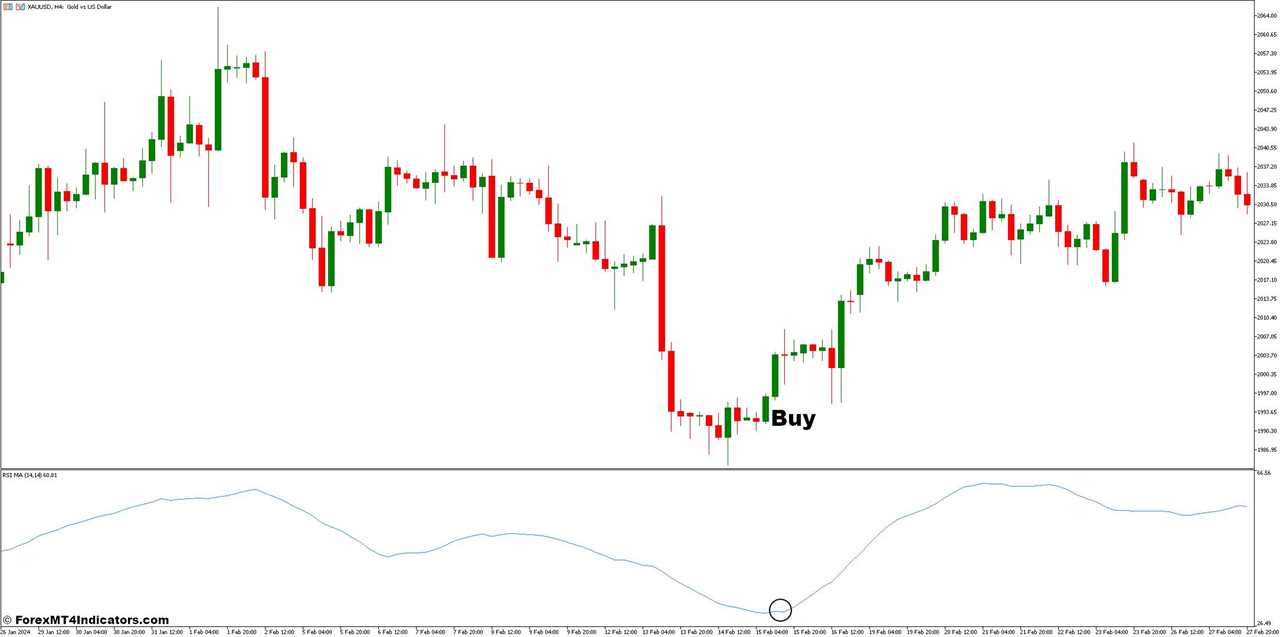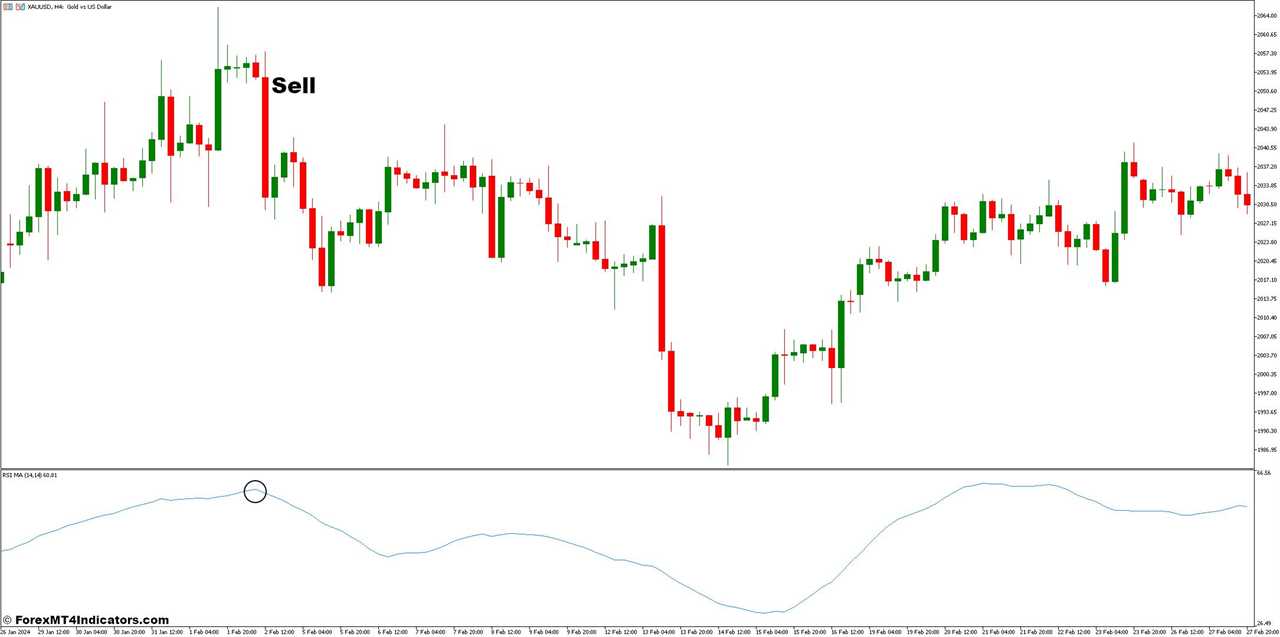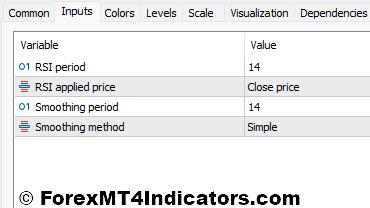||
The world of financial markets can feel like a whirlwind of complex charts, indicators, and strategies. But fret not, intrepid trader! Today, we’ll be delving into a powerful tool that can simplify your analysis and potentially enhance your trading decisions: the RSI MA MT5 Indicator. Buckle up, because we’re about to embark on a comprehensive journey to understand what this indicator is, how it works, and how you can leverage it to navigate the ever-shifting tides of the market.
Benefits of Combining RSI and Moving Averages on MT5
There are several advantages to using the RSI MA MT5 Indicator:
- Enhanced Trend Confirmation: The moving average helps filter out short-term price noise, allowing you to identify the prevailing trend with more confidence. The RSI then pinpoints potential entry and exit points within that trend.
- Overbought/Oversold Signals: By visualizing the RSI’s relationship with the moving average, you can spot potential overbought or oversold conditions more effectively. This can inform your decision to enter a long position (buying) during an oversold scenario or initiate a short position (selling) when overbought.
- Improved Divergence Identification: Sometimes, the price may move in one direction, while the RSI moves in the opposite direction. This “divergence” can be a valuable signal of a potential trend reversal, allowing you to adjust your trading strategy accordingly.
Limitations of the RSI MA Indicator
- False Signals: Market conditions can be dynamic, and the indicator may generate false overbought/oversold signals, leading to premature entries or exits.
- Lagging Indicator: Both the RSI and moving averages are lagging indicators, meaning they react to past price movements. This can be a disadvantage in fast-moving markets.
- Overreliance: It’s crucial not to rely solely on the RSI MA MT5 Indicator. Combine it with other technical analysis tools and fundamental analysis to form a well-rounded trading strategy.
Understanding these limitations helps you interpret the indicator’s signals effectively and avoid potential pitfalls.
Understanding the Building Blocks: RSI and Moving Averages
Now that we’ve grasped the core concept of the RSI MA MT5 Indicator, let’s dissect its essential components:
Understanding the RSI (Relative Strength Index)
Developed by J. Welles Wilder, the RSI is a momentum oscillator that gauges the recent strength or weakness of price movements. It oscillates between 0 and 100, with interpretations as follows:
- Overbought Zone (Typically Above 70): This suggests the asset might be due for a correction, as recent price increases have been substantial.
- Neutral Zone (Typically Between 40 and 70): The market lacks a clear directional bias.
- Oversold Zone (Typically Below 30): This indicates the asset might have been oversold and could experience a price rebound.
How the RSI is Calculated:
The RSI calculation involves a bit of math, but we can break it down into simpler terms. The indicator considers the average of closing price gains (upward closes) compared to the average of closing price losses (downward closes) over a specific period (often set to 14 days). The resulting value is then transformed into a scale of 0 to 100.
Interpreting RSI Values (Overbought, Oversold, and Neutral Zones)
While the standard zones mentioned above (overbought at 70+, oversold at 30-) are widely used, it’s important to remember that these thresholds are flexible. Depending on the asset and market volatility, these zones might need adjustment.
For instance, a highly volatile asset might see the RSI regularly reach the 80s or even 90s before a correction, while a more stable asset might only reach the 70s. Here’s where experience and observing historical price action alongside the RSI can be valuable.
Setting the RSI Period in MT5
The RSI period is a customizable setting within the MT5 platform. The most common period is 14, but you can experiment with different values to see how they affect the indicator’s sensitivity. A shorter period will result in a more reactive RSI, highlighting shorter-term price swings. Conversely, a longer period will generate a smoother RSI line, focusing on longer-term trends.
Remember: There’s no “one size fits all” approach to RSI periods. Experiment and find what works best for your trading style and the asset you’re analyzing.
Understanding Moving Averages in MT5
Moving averages (MAs) are another cornerstone of technical analysis. They smooth out price fluctuations by calculating the average price over a specific period. This helps traders visualize the underlying trend and identify potential support and resistance levels.
Types of Moving Averages (Simple Moving Average, Exponential Moving Average, etc.)
MT5 offers a variety of moving averages, each with unique characteristics:
- Simple Moving Average (SMA): This is the most basic type, calculated by simply averaging the closing prices over a chosen period.
- Exponential Moving Average (EMA): The EMA gives more weight to recent prices, making it more responsive to recent price movements.
- Smoothed Moving Average (SMMA): This type combines a simple moving average with an exponential moving average, offering a balance between responsiveness and smoothness.
Choosing the Right Moving Average for Your RSI MA Strategy
The choice of moving average depends on your trading goals and preferred timeframe. Here’s a general guideline:
- Short-Term Trading: Opt for a shorter-period moving average (e.g., 10-day EMA) to capture recent price trends.
- Long-Term Trading: Use a longer-period moving average (e.g., 50-day SMA) to identify long-term trends and potential support/resistance zones.
Setting the Moving Average Period(s) in MT5
Similar to the RSI period, the moving average period(s) can be adjusted within the RSI MA MT5 Indicator settings. You can experiment with different periods to find what best complements your RSI settings and trading strategy.
Now that we’ve explored the inner workings of the RSI and moving averages, we’ll delve into the practical application of the RSI MA MT5 Indicator in the next section!
How to Trade With RSI MA Indicator
Buy Entry

- Bullish Crossover: When the RSI line crosses above the moving average line from below, and both lines are trending upwards, this can be a potential buy signal.
- Stop-Loss: Place your stop-loss order below the recent swing low or the moving average line, whichever provides a tighter stop.
- Take-Profit: Consider taking profits when the RSI reaches the overbought zone (typically above 70) or when the price action shows signs of weakness (e.g., bearish reversal patterns).
Sell Entry

- Bearish Crossover: When the RSI line crosses below the moving average line from above, and both lines are trending downwards, this can be a potential sell signal.
- Stop-Loss: Place your stop-loss order above the recent swing high or the moving average line, whichever provides a tighter stop.
- Take-Profit: Consider taking profits when the RSI reaches the oversold zone (typically below 30) or when the price action shows signs of bullish reversal patterns.
RSI MA Indicator Settings

Conclusion
The RSI MA MT5 Indicator can be a valuable tool for traders seeking to identify potential entry and exit points in the market. By combining the momentum insights of the RSI with the trend-smoothing capabilities of moving averages, this indicator can offer a more comprehensive view of price action.
Recommended MT4/MT5 Broker
XM Broker
- Free $50 To Start Trading Instantly! (Withdraw-able Profit)
- Deposit Bonus up to $5,000
- Unlimited Loyalty Program
- Award Winning Forex Broker
- Additional Exclusive Bonuses Throughout The Year
- Exclusive 50% Cash Rebates for all Trades!

>> Sign Up for XM Broker Account here with Exclusive 50% Cash Rebates For All Future Trades [Use This Special Invitation Link] <<
Already an XM client but missing out on cashback? Open New Real Account and Enter this Partner Code: 𝟕𝐖𝟑𝐉𝐐
(Free MT4 Indicators Download)

RSI MA MT5 Indicator
||
-----------------------------------------------------
By: Tim Morris
Title: RSI MA MT5 Indicator
Sourced From: forexmt4indicators.com/rsi-ma-mt5-indicator/?utm_source=rss&utm_medium=rss&utm_campaign=rsi-ma-mt5-indicator
Published Date: Tue, 26 Nov 2024 01:00:08 +0000
Read More
.png) InvestingStocksToolsClubsVideosPrivacy PolicyTerms And Conditions
InvestingStocksToolsClubsVideosPrivacy PolicyTerms And Conditions
